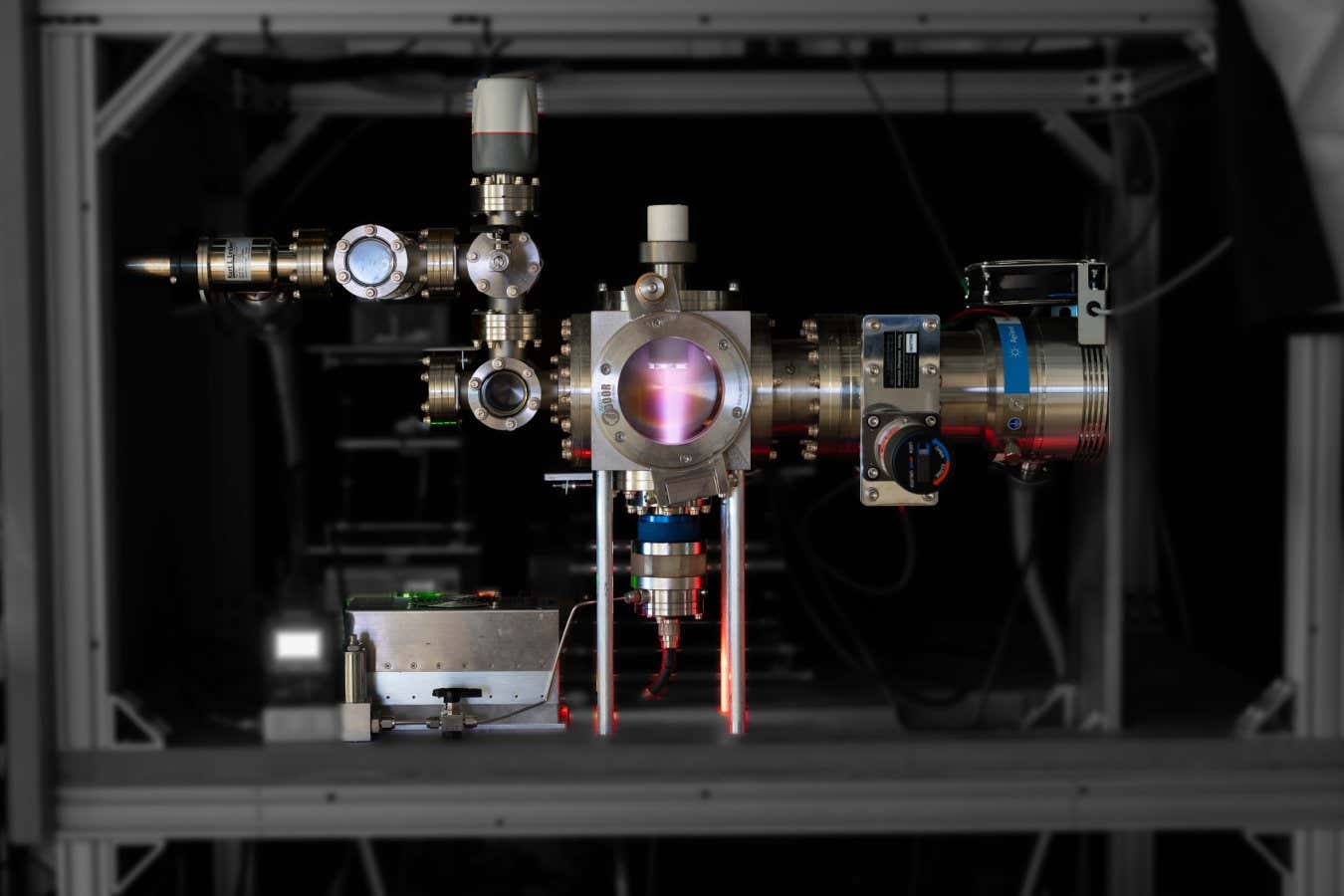
The Thunderbird nuclear fusion reactor
Berlinguette Group, UBC
Cold fusion, one of the most notorious blunders in science, is making a return – of sorts. Scientists have resurrected an experiment that was once claimed to show room-temperature nuclear fusion, offering the tantalising possibility of producing energy via the same mechanism as within in the sun, but without the need for enormous heat. While the original idea was thoroughly debunked, this latest version shows a way to boost levels of fusion, even if it can’t yet produce useful amounts of energy.
Nuclear fusion is a process in which atomic nuclei are forced together at extreme temperatures and pressures, merging them and releasing energy as a result. While this takes place naturally within stars like our sun, replicating the process on Earth to use as a power source has proved incredibly difficult, and despite plans for a commercial fusion reactor first being proposed in the 1950s, we have yet to build one that can reliably produce more energy than it consumes.
In 1989, it seemed like that was about to change. Two chemists at the University of Utah, Stanley Pons and Martin Fleischmann, claimed to have demonstrated nuclear fusion occurring at room temperature in a tabletop experiment, consisting of a rod of palladium submerged in water infused with neutron-rich deuterium and zapped with an electrical current. This process appeared to produce spikes of excess heat beyond what was predicted from simple chemical reactions, which Pons and Fleischmann took as a signal that nuclear fusion was occurring at a significant rate.
The experiment, which quickly earned the name cold fusion, drew intense interest as it showed an alternative and easier path to cheap, clean energy production than conventional hot fusion. But with multiple researchers around the world failing to replicate the excess heat observations, the idea was dead in the water by the end of that year.
Now, Curtis Berlinguette at the University of British Columbia in Canada and his colleagues have built a tabletop particle accelerator inspired by, but fundamentally different from, Pons and Fleischmann’s original work.
“Cold fusion was dismissed in 1989 because the claims could not be reproduced. What we have built is a reproducible experiment that others can validate,” says Berlinguette. “We’re not claiming any energy miracles in our work. We are simply providing credible data to advance science and make fusion more accessible and interdisciplinary.”
Like the original cold fusion experiment, the researchers used deuterium – a form of hydrogen with a neutron in its nucleus – and palladium. The reactor, called the Thunderbird, consists of a high-energy beam of deuterium nuclei, or deuterons, that are fired into a palladium electrode. The palladium starts absorbing these deuterons, which begin to fuse with more incoming deuterons from the beam, producing neutrons. The rate of neutron production increased during the first 30 minutes of the experiment before levelling out, a sign that the palladium became saturated with deuteron.
To boost the rate of fusion further, the researchers then switched on an electrochemical device filled with deuterium oxide, also known as heavy water. An electric current splits this into deuterium and oxygen, with the former absorbed into the electrode and increasing the number of deuterons in the palladium further, driving the fusion rate up. “What we really drew from the 1989 experiment is this notion of using electrochemistry to load up an electrode with hydrogen fuel,” says Berlinguette.
The team found that this increased the number of neutrons produced, equivalent to an increased fusion rate of around 15 per cent. However, this would only be enough to produce a billionth of a watt, while the device itself requires 15W to run. “We are orders of magnitude off of being able to power your home or building with one of these reactors,” says Berlinguette.
Though the experiment is clearly inspired by the 1989 work, Thunderbird’s nuclear fusion comes mainly from the powerful deuteron beam rather than the electrochemistry originally claimed in Pons and Fleischmann’s work, says Anthony Kucernak at Imperial College London. “It’s not like it’s an unknown phenomena — that if you accelerate deuterons into a solid target with deuterium in it, you actually get what appear to be fusion events.” It is also a “hot” version of fusion, he says – the energy of the deuterons in the beam is equivalent to hundreds of millions of degrees kelvin, the temperature at which regular fusion occurs anyway.
A 15 per cent increase in deuterium in the palladium target is also relatively modest, says Kucernak, but it would be interesting to see whether this can be increased by using different metals in the electrode, he says.
Berlinguette is optimistic that this fusion rate can be increased by redesigning the reactor, and says that recent unpublished work from one of his colleagues found that just changing the shape of the electrode can increase the fusion rate by four orders of magnitude – though this is still well below usable levels.
Even if they can’t reach higher fusion rates, Berlinguette hopes that their electrochemical technique of increasing deuterium in a metal could have other uses, such as making so-called high-temperature superconductors, ones that don’t require really cold conditions. Many promising superconducting materials, which have zero electrical resistance and could transform the world’s electrical and energy systems, are metals that contain large amounts of hydrogen. Making these compounds often requires vast pressures and energy-intensive processes, but the electrochemical cell used in the Thunderbird reactor could do this with far less energy, says Berlinguette.
CERN and Mont Blanc, dark and frozen matter: Switzerland and France
Prepare to have your mind blown by CERN, Europe’s particle physics centre, where researchers operate the famous Large Hadron Collider, nestled near the charming Swiss lakeside city of Geneva.
Topics:
- nuclear fusion technology
Source link : https://www.newscientist.com/article/2493372-nuclear-fusion-gets-a-boost-from-a-controversial-debunked-experiment/?utm_campaign=RSS%7CNSNS&utm_source=NSNS&utm_medium=RSS&utm_content=home
Author :
Publish date : 2025-08-20 16:00:00
Copyright for syndicated content belongs to the linked Source.